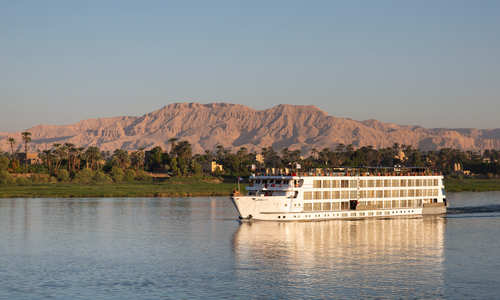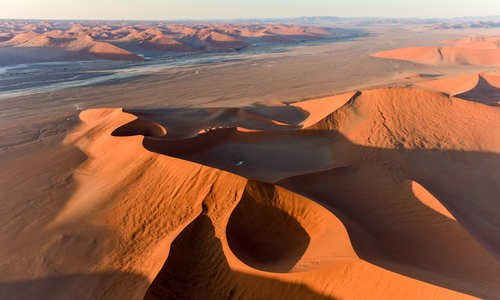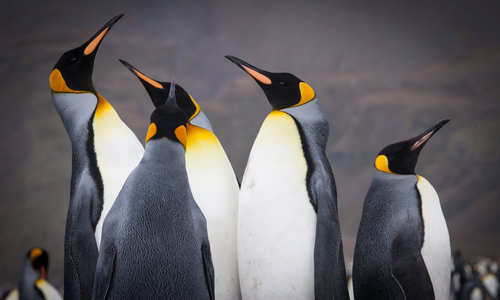Article content
1 July 2024 by Norire Arakelyan
For some, rain is a source of life, a welcome break from the sun. But for others, the allure lies in the opposite extreme: the vast, arid landscapes where the sun reigns supreme. These are the driest places on Earth, destinations that beckon with their stark beauty, unique ecosystems, and a sense of adventure unlike any other. If you're tired of the same old beach vacation and crave a trip that will truly push your boundaries, then buckle up! We're taking a deep dive into the driest corners of our planet.
The Atacama: A Martian marvel
First up is the undisputed champion of aridity – the Atacama Desert in Chile. With otherworldly landscapes more reminiscent of Mars than Earth, it receives an average annual rainfall of less than 1 millimetre (0.04 inches)! Some parts haven't seen a drop in over 400 years. But the Atacama is much more than just a barren wasteland. Nicknamed the "driest non-polar desert," it's is a surreal place of stark beauty – a fascinating mix of flat desert, towering volcanoes and geyser fields, where otherworldly rock formations rise from bone-dry plains, and vibrant salt flats shimmer under the relentless sun.
Visits between November and March offer the perfect chance to explore Chile’s most famous wine making regions – the Colchagua and Casablanca valleys, alongside the highlights of the Atacama, from the spectacular Valle de la Luna – with its jagged rock formations eerily resembling lunar craters – to the El Tatio Geysers – the world's highest concentration of geysers at over 4,300 meters. Stargazers will also be blown away by the crystal-clear skies throughout this region, offering unparalleled views of the Milky Way.

Chile's desolate Atacama Desert
Death Valley: A Furnace of heat
North America throws its hat in the ring with Death Valley National Park in California. This scorching basin holds the record for the hottest recorded temperature on Earth (a sizzling 56.7°C or 134°F in 1913). Death Valley is a land of extremes, with parched salt flats, eroded canyons, and the otherworldly rock formations of Zabriskie Point. Best of all, it's incredibly accessible and ties on perfectly with any classic Californian or Nevadan road trip. If you're coming from Las Vegas, Death Valley is just a short drive away. This leg can be easily incorporated into a road trip that includes exploring the California coast or venturing up north to Sequoia and Kings Canyon National Parks.
No matter the what you plan around your visit, Death Valley offers a unique contrast to the typical Californian experience. It's a must-visit for those seeking adventure and a taste of the desert's stark beauty. You can explore and hike slot canyons, golden cliffs, and towering sand dunes, or come the night time, marvel in Death Valley extraordinary transformation into a stargazer's paradise, with some of the world's least polluted skies. Those looking for an in-depth understanding of the area's history can explore the remains of mining settlements like Ballarat, Greenwater, and Skidoo. These towns boomed during the mining era but were eventually abandoned as the mines played out. These ghost towns offer a glimpse into the lives of the miners and entrepreneurs who once sought fortune in Death Valley.

The road leading to Death Valley, California
Visit California & Death Valley
Namibia: More than sand & skeletons
Namibia. The very name conjures images of endless deserts, ancient landscapes, and a unique wildlife experience unlike any other. But did you know Namibia also holds the title of being one of the driest countries on Earth? For adventure travellers and nature enthusiasts seeking a destination beyond the ordinary, Namibia offers a beauty born from aridity. Whether you're seeking the towering red sand dunes of Sossusvlei, hiking the quiver tree forests of the south or witnessing the infamous Skeleton Coast – a hauntingly beautiful stretch of the country's Atlantic coastline known for being littered with the remains of historic shipwrecks, victims of the treacherous fogs and currents, Namibia's unforgiving climate has created a world of unique phenomena.
And, despite the seemingly never-ending stretches of sand and wasteland, Namibia offers refuge to undoubtedly some of the world's most hardy animals. Among the arid landscapes and salt pans, Etosha National Park is a refuge to all manner of wildlife who come to take advantage of the seasonal rains. Boasting everything from majestic elephants and black rhinos to playful meerkats and graceful springboks, it is one of southern Africa's best places for a wildlife safari. Witness these creatures gather around watering holes, a vital source of life in this dry environment.

Quiver tree forests in southern Namibia
Oman: The pearl of Arabia
While Oman might not be the absolute driest place on Earth (that title belongs to the Atacama Desert in South America), it certainly holds a strong contender spot. Oman's heart lies in its vast deserts, particularly the famed Empty Quarter (Rub' al Khali). The stark beauty of these endless sand dunes, sculpted by relentless winds, is a sight to behold. But, the desert isn't just about sand. Jebel Akhdar, the "Green Mountain" range carves through the arid plains, offering a surprising contrast. Here, ancient villages cling to the mountainsides, their lush falaj irrigation systems a testament to human ingenuity in a dry land.
Contrasting all of this beautifully, is the ancient city of Muscat, which serves as a fantastic starting point for any Omani exploration. A Blend of rich history and modernity, the city offers a captivating mix of ancient forts, traditional souqs, and impressive contemporary architecture like the Sultan Qaboos Grand Mosque. Meanwhile, almost impossibly, it also offers visitors a chance to relax on pristine beaches, or even go snorkelling amidst vibrant coral reefs.

A view of Muscat, Oman's capital
Antarctica: The world's driest continent
Believe it or not, Antarctica isn't just about glaciers and penguins. While most people associate the White Continent with snow and ice, Antarctica is technically classified as a desert because it receives so little precipitation. The average annual precipitation is only about 200 millimetres (8 inches), and most of that falls as snow. In fact, some areas of Antarctica haven't seen rain in millions of years! This incredibly dry climate is due to the continent's high altitude and isolation. The cold air holds very little moisture, and the surrounding ocean is blocked by sea ice for much of the year.
But for the adventurous traveler, Antarctica offers a landscape unlike any other on Earth, a pristine wilderness of ice, snow, and mountains, teeming with unique wildlife. As one of the world's last great wildernesses, this pristine environment once took years to travel to and explore. These days it's far more accessible, with expedition cruise ships bringing guests in luxurious comfort to explore landscapes and sights seen by only a fraction of people in the world.

Mountains & glaciers of Antarctica








